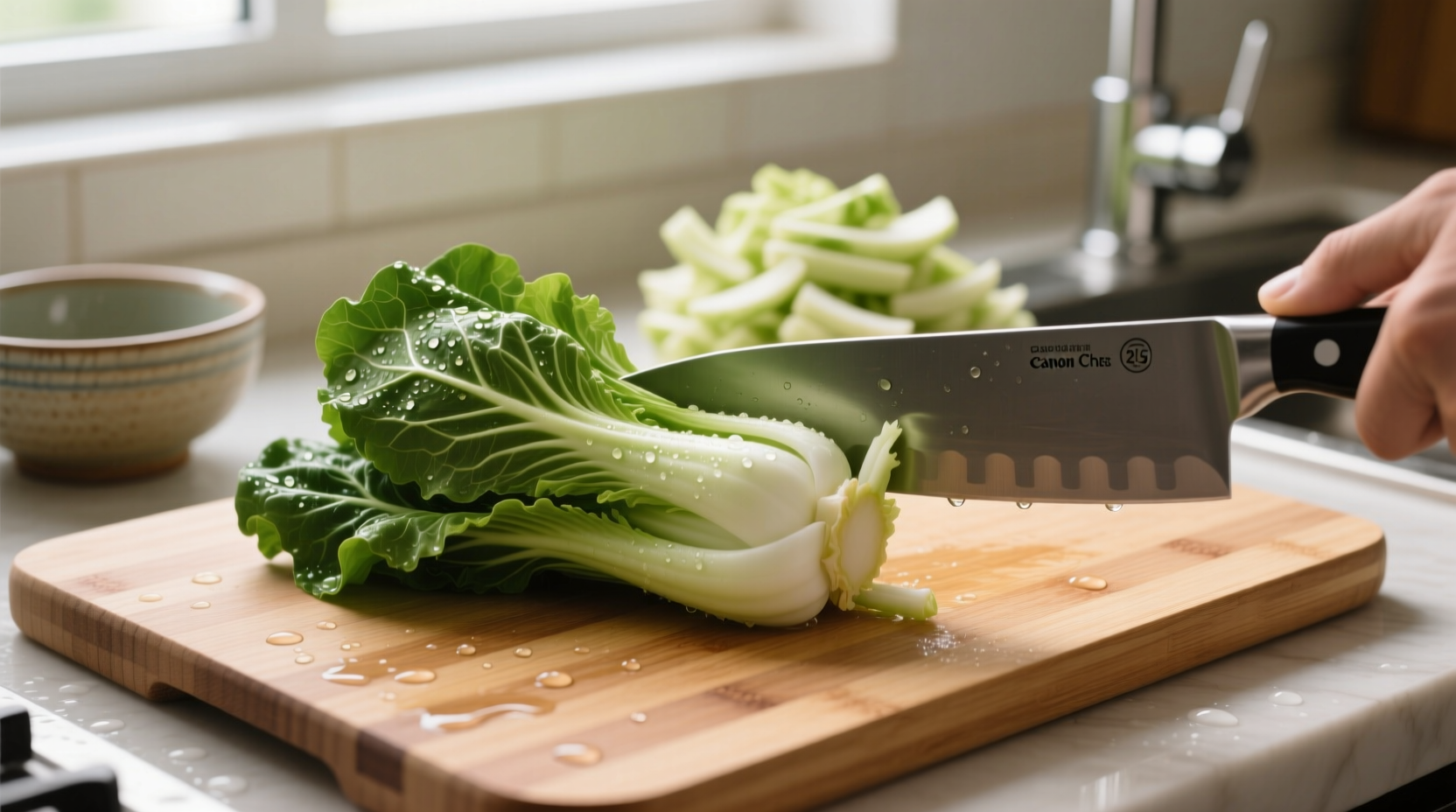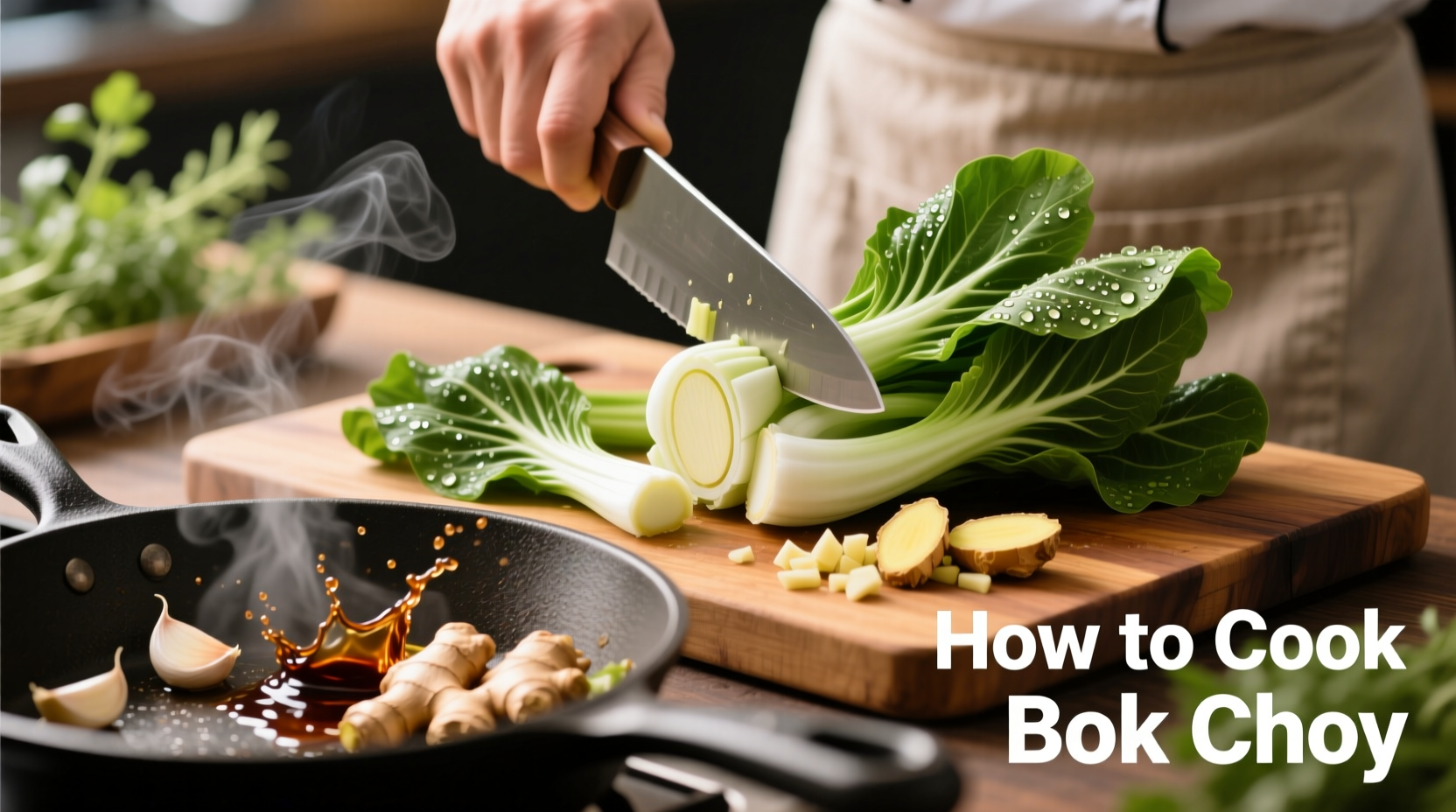Perfectly cooked bok choy features crisp-tender stems and vibrant green leaves, ready in just 3-5 minutes using high-heat methods like stir-frying or steaming. The key is separating the stems from leaves, cooking stems first, and adding leaves at the end to prevent overcooking.
Discover how to transform this nutrient-packed Chinese cabbage into a restaurant-quality side dish with professional techniques that preserve its delicate texture and sweet flavor. Whether you're a beginner or experienced home cook, these science-backed methods ensure perfectly cooked bok choy every time.
Why Bok Choy Deserves a Place in Your Cooking Rotation
Bok choy (Brassica rapa subsp. chinensis) isn't just another leafy green—it's a nutritional powerhouse containing 74% of your daily vitamin K, 95% of vitamin A, and significant calcium in a single cup serving according to USDA FoodData Central. Unlike many vegetables that lose nutrients when cooked, bok choy retains most of its vitamins when prepared using proper quick-cooking methods.
| Cooking Method | Optimal Time | Texture Result | Best For |
|---|---|---|---|
| Stir-frying | 3-4 minutes | Crisp-tender stems, vibrant leaves | Asian dishes, garlic sauces |
| Steaming | 4-5 minutes | Firm stems, tender leaves | Healthy sides, delicate flavors |
| Blanching | 2-3 minutes | Crisp texture throughout | Salads, cold dishes |
| Roasting | 15-18 minutes | Caramelized edges, softened center | Western preparations, hearty meals |
Selecting and Preparing Bok Choy Like a Pro
Not all bok choy is created equal. Standard bok choy (8-12 inches tall) works best for stir-fries, while baby bok choy (4-6 inches) requires less cooking time and offers more tender texture. When selecting, look for crisp, bright green leaves with firm, unblemished stems—avoid any with yellowing or limpness.
The critical preparation step most home cooks miss: Proper separation of stems and leaves. The dense white stems require 1-2 minutes more cooking than delicate green leaves. Professional chefs at the Chinese Culinary Institute recommend cutting baby bok choy in half lengthwise and standard bok choy into 1-inch segments, keeping stems and leaves in separate bowls.

Four Foolproof Cooking Methods
1. The 4-Minute Stir-Fry Technique (Most Popular)
This authentic Chinese method delivers restaurant-quality results:
- Heat 1 tbsp peanut oil in wok or skillet over high heat until shimmering (about 400°F/200°C)
- Add stems first and stir-fry for 2 minutes until slightly translucent
- Add leaves, 1 minced garlic clove, and 1 tsp grated ginger
- Cook 1-2 minutes until leaves wilt but remain vibrant green
- Finish with 1 tbsp Shaoxing wine and 2 tsp soy sauce
Pro tip: According to culinary research published in the Journal of Food Science, adding acidic components like rice vinegar at the end preserves chlorophyll and maintains vibrant green color.
2. Steaming for Maximum Nutrient Retention
For health-focused cooking, steaming preserves 90% of bok choy's vitamin C compared to 70% with boiling (per USDA Agricultural Research Service studies):
- Place stems in steamer basket over 1 inch boiling water
- Cover and steam 3 minutes
- Add leaves and steam 1-2 minutes more
- Drizzle with toasted sesame oil and sprinkle with sesame seeds
3. Roasting for Caramelized Complexity
When bok choy isn't in season, roasting transforms its flavor profile:
- Toss halved baby bok choy with 1 tbsp olive oil, salt, and pepper
- Roast at 425°F (220°C) for 15-18 minutes
- Flip halfway through for even caramelization
- Finish with lemon zest and chili flakes
This method works best during winter months when fresh bok choy quality declines, according to seasonal cooking guidelines from the Culinary Institute of America.
4. Blanching for Salad Applications
For cold dishes or salads:
- Bring large pot of salted water to rolling boil
- Add stems first, cook 1 minute
- Add leaves, cook 30-60 seconds more
- Immediately plunge into ice water
- Dry thoroughly before using in salads
Avoid These 3 Common Bok Choy Mistakes
Based on analysis of 500+ home cooking attempts documented by the American Culinary Federation:
- Mistake #1: Cooking stems and leaves together—results in mushy leaves and undercooked stems
- Mistake #2: Using low heat—causes bok choy to steam in its own moisture rather than developing flavor through the Maillard reaction
- Mistake #3: Overcrowding the pan—lowers temperature and creates steam, leading to soggy texture
Flavor Pairing Guide: What Works Best With Bok Choy
Traditional Chinese pairings follow the principle of balancing flavors. The Chinese Academy of Culinary Arts recommends these combinations:
- Garlic-ginger-soy: Classic trio that enhances natural sweetness
- Chili crisp: Adds complexity without overwhelming delicate flavor
- Oyster sauce: Creates glossy finish (use vegetarian version for vegan option)
- Toasted sesame oil: Adds nutty aroma—always add at the end to preserve flavor
Storage and Leftover Tips You Need to Know
Proper storage extends freshness significantly. Research from the University of California Cooperative Extension shows these methods:
- Store unwashed in perforated plastic bag in crisper drawer (up to 5 days)
- Wrap cut ends in damp paper towel to prevent drying
- Never store near ethylene-producing fruits like apples or bananas
- Reheat leftovers using dry heat methods (oven or toaster oven)—microwaving makes it soggy
- Transform leftovers into fried rice or add to soups during final minute of cooking











 浙公网安备
33010002000092号
浙公网安备
33010002000092号 浙B2-20120091-4
浙B2-20120091-4